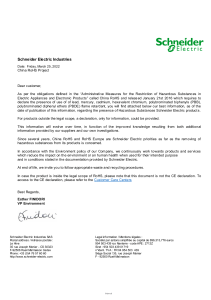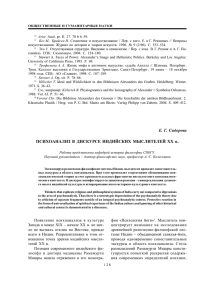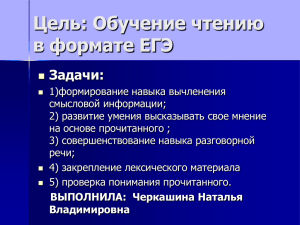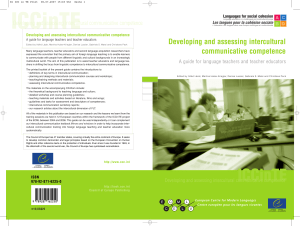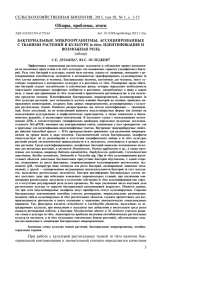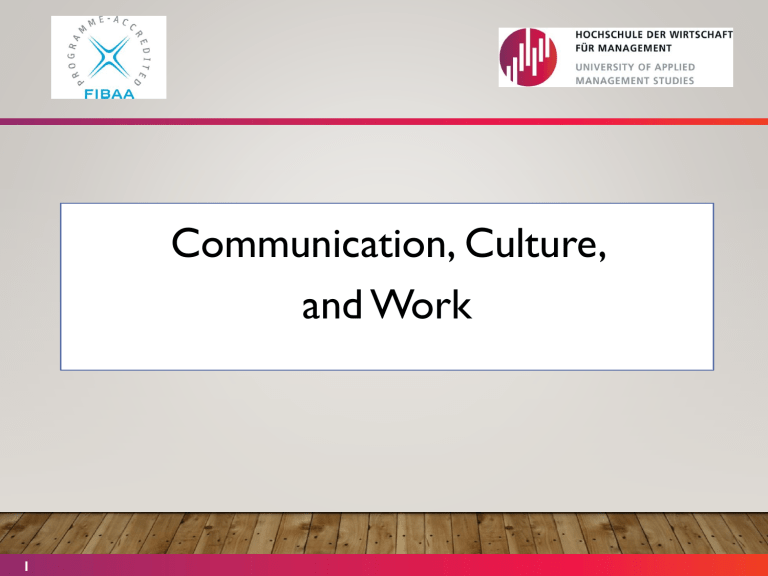
Communication, Culture, PROF. DR. DOLORES SANCHEZ BENGOA and Work 1 CULTURAL DIVERSITY AND COMMUNICATION • Changing demographics • Increased multi-national companies • Global talent prioritized 2 US GROWING DOMESTIC DIVERSITY CHANGE IN DEMOGRAPHICS U.S. population undergoing dramatic change Minorities now represent 35% of U.S. population Growth of “cultural generation” gap Increase in 45-64 age cohort (largely due to the Baby boom generation) Younger generation growth largely product of Hispanic and Asian births 25 million workers or 15% of the total labor force were from outside USA 3 Immigrants have been responsible for 25% of all U.S. patents. U.S. IMMIGRATION AND ITS CONTRIBUTION EUROPE 2018????? Chinese and Indian immigrants accounted 40% of the patents coming from work at Intel Corporation. 40% of the Ph.D.s. awarded by U.S. universities in science and engineering, and 65% in computer science, went to foreign-born students (2006). During the period of 1995-2005, 25% of all engineering and technology companies started in the US had at least one immigrant as a founder. 4 QUESTIONS TO REFLECT 1. 2. 5 Working with other cultures in your country how do you think the dominant culture influence cultural values? As a member of a host culture, what responsibilities do you have to make immigrants feel comfortable in their new cultural environment? CULTURAL DIFFERENCES IN BUSINESS • Customs and behavior • Formality • Social customs • • • • 6 Greetings Business cards Gift giving Socializing CULTURAL DIFFERENCES IN BUSINESS Time Monochronic Polychronic Tolerance for conflict – expressing emotions. Country examples. Gender roles 7 HIGH CONTEXT VS. LOW CONTEXT CULTURES American anthropologist Edward T. Hall (1960-1990) o In low context cultures the communication style is determined by specific terms and concepts being central together with clearness and directness. o The advantage of this type of communication is that there is no space for reading between the lines since everything will be said, go straight down to business avoiding wasting time on small talks and proceeding directly to a rational discussion of the tasks to accomplish. 8 HIGH CONTEXT CULTURES • Communication is dependent upon the person and the situation. • Information is shared among people, and some people have more privileged access than other. Much is communicated in what is not said Hall (in Barsoux and Schneider, 2003, p.44). • Requires a special ability to get the real message and avoid ambiguity. • Sometimes, a direct style of communication will creates embarrassment and discomfort”. Barsoux and Schneider, (2003). • The degree of how low or high context a country is should be careful researched. 9 DIMENSIONS OF CULTURAL DIVERSITY • High-Context • Meaning conveyed subtly • Save face • Social harmony 10 • Low-Context • Meaning conveyed by words spoken 11 WESTERN VERSUS CHINESE WESTERN CHINESE 12 • Do you understand? • Am I being clear? Responsibility placed on others Speaker takes responsibility for understanding CAN DO VS KLARHEIT • John, the American client has expressed the desire to have a particular change in a product that Wolfgang, the German employee from the supplier company, is developing. 13 COMMUNICATION AND VALUES • American working professionals value a “can-do” approach to decision making processes, in which ideally, one looks at a situation and focuses on finding solutions, quickly. An employee who is good at finding creative solutions is considered to be “pro-active”: a highly prized characteristic in American society 14 COMMUNICATION AND VALUES • Americans are known to make continual alternations during a product development even if these cancel earlier decisions. Germans tend to feel this is a poor engineering decision because projects are planned in detail and should not be adjusted. This is because alterations imply the engineering team was not thorough during the planning stage. Therefore,Wolfgang is more than likely to want to disagree. • The disagreement is there: an American may take more time to show a person oriented style by extending the token agreement, and focusing on points that indicate agreement. • In contrast, Germans tend to value clarity and discussion in the process of finding a solution. By presenting information one shows cooperation and good-will. • In addition, the receiver doesn’t need to interpret the meaning or assume the speaker’s intentions. In Wolfgang’s world, an employee is valued for their ability to show technical know-how by pointing out the “problems” connected with suggestions. Critical thinking is highly valued and often misunderstood by Americans who expect a can-do approach. 15 CO-CULTURAL DIMENSIONS OF DIVERSE SOCIETY • Language • Regional Differences • Ethnicity 16 CO-CULTURAL DIMENSIONS OF DIVERSE SOCIETY Generational Differences Matures Boomers (1945-1964) Generation X (19651980) Generation Y (19802000) 17 CO-CULTURAL DIMENSIONS OF DIVERSE SOCIETY • Disabilities • Communication Guidelines • People with disabilities 18 RECOMMENDATIONS 19 1. Be naturally cordial 2. Offer the same level of respect that you would to any other person 3. Don’t be pushy. If you offer assistance, wait until your offer is accepted 4. Accommodate to the disability: e.g. when meeting a person who is visually impaired, identify yourself and others who may be with you. When speaking with a person in a wheelchair place yourself at eye level RECOMMENDATIONS • Be patient: perhaps ask short questions with short answers, nod, shake the head. Never pretend to understand if you are having difficulties. • Relax: don’t be embarrassed if you use a standard expression like “see you later” to somebody with sight difficulty. Don’t be afraid to ask questions when you are unsure of what to do. 20 DIVERSITY AND ETHICAL ISSUES Responding to Challenges • Avoiding – refuse to make business • Accommodating - acceptance • Forcing – insist of doing business 21 DIVERSITY AND ETHICAL ISSUES Responding to Challenges • Educate and persuade: Try to convince people that your principles are good • Negotiate-compromise • Collaborating and finding common problem solving 22 COMMUNICATING ACROSS DIVERSITY Become culturally literate View diversity as opportunity Avoid ethnocentrism Adapt your behavior Create dialogue 23 ETHNOCENTRISM • The inclination to see all events from the perspective of your own culture and to evaluate your own culture as superior 24 CULTURAL RELATIVISM 25 INTERCULTURAL SENSITIVITY 26 GROUP WORK • Find a video/ YouTube that demonstrates intercultural communication. With your group analyze the video. Identify comments and/or behaviors that block or promote authentic relations. • For those behaviors that block authentic relations suggest ways to improve communication and share your finding to the class. 27


